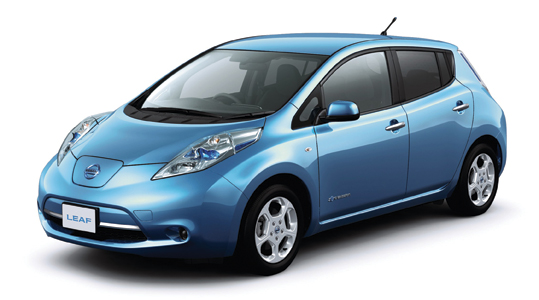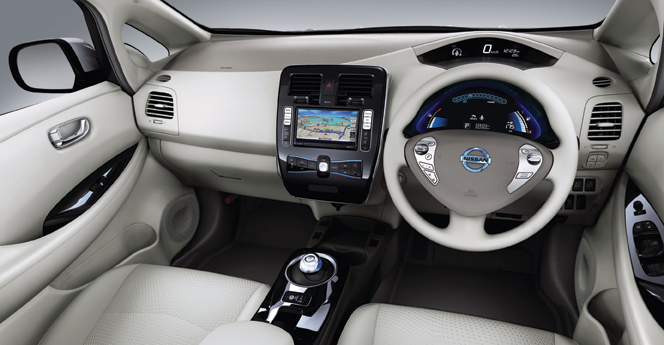It is an exciting and unprecedented time for the energy and utilities industry. The rapid adoption of new technologies, particularly communications-based technologies, has provided a platform for the industry to meet multiple demands ranging from energy efficiency to improved reliability. Whether we are talking about the adoption of wireless technologies to read new meters or network monitoring devices, there is no dispute that connectivity is key to Smart Grid.
The Electric Vehicles ARE Coming!
There is also no disputing the buzz around the availability of electric vehicles in the United States. According to transportation expert, Antonio Benecchi of Roland Berger, plug-in hybrids and electric vehicles will capture 10 to 20 percent of the auto market by 2030.1 For argument’s sake, assume total vehicle parc (i.e., the total number of vehicles on the world’s roadways) will remain relatively static at roughly 500 million in North America and Europe. This equates to nearly 100 million vehicles whose primary or sole means of locomotion is electric power. If each vehicle averages 30kwhr capacity, we may redefine the old car expression – “that’s a lot of power!”

Electric Vehicles MUST be Connected Vehicles.
(Photo Courtesy of Airbiquity)
The market is indeed stirring. Nissan delivered the first all-electric LEAF vehicles to Japanese and North American markets in late 2010 and has aggressive targets for both vehicles and markets, adding multiple European countries through 2011 and into 2012. Riding the wave of EV excitement, Ford followed suit with the announcement of its fully-electric Focus at this year’s Consumer Electronics Show in January. While the Focus is set to be available to customers by the end of the year, Ford has discussed a strategy of electrifying the entire fleet of Ford vehicles.
It is worth noting that both Ford and Nissan are top brands in vehicle markets, characterized by high quality vehicles and an enthusiastic customer base. Other automotive brands have announced plans for introducing alternatively powered vehicles, primarily electrically powered. The target markets are not just consumer-centric either, with significant production plans focused on local and municipal fleets. Large fleet owners, such as Coca-Cola, FedEx and DHL, are experimenting with electric power within their vehicle mix as well.
This is not just a ploy from automakers and fleet operators looking to harness a public conversation for their own publicity. Rather, these initiatives, both announced and yet to come, are central to a vision of supplying the market with vehicles that owners and drivers want. The promise of electrical power within the vehicle fleet holds great value to both consumers and business enterprises alike.
Let’s face it; the days of dependably inexpensive gasoline are behind us. In 2010, roughly half of all U.S. fuel consumption came from domestic sources, and that portion is growing. Meanwhile, the price of gasoline in February and March of 2011 is rising quickly because of events in the Middle East. No matter how much petroleum is produced in the U.S., it is a global commodity where price is determined by gyrations well beyond the control of a single country’s sourcing strategy – even a consumer as large as the U.S. Inexpensive fuel will find a new floor at $3.00/gal, and even that is likely to prove a rare occurrence. Electric power – even expensive electric power – is a fraction of that operating cost.
This is all well and fine, until some tens of thousands of electric vehicles in a mid-sized metropolitan market arrive back at the home, shop or warehouse and plug in to the electric grid. Or, even in a more realistic and near-term scenario, several dozen electric vehicles in a typical suburban neighborhood each plug in at 7 p.m. on a warm evening, when the grid is already struggling to carry load for the air conditioning demand.
EV vs. AC
Someone remarked that electric vehicles represent the single largest step function change in demand since the air conditioner. It’s likely that buying an air conditioner did not require notifying the local utility that summertime demand at a specific address would increase. Maybe that’s because there was sufficient headroom in the grid at that time, or because it was concurrent with infrastructure investment in the post-WWII years. Regardless, it is worth discussing both whether and how such notification should occur now. Markets tend to cluster geographically, so early adopter markets are likely to exacerbate load planning and management challenges.
Indeed, it is worth pausing to consider that this new technology product – electric vehicles – will generate new ecosystems of supplier and service companies. Unlike other new technology products, these new ecosystems will need to wrestle some very big and thorny topics that revolve around product lifecycles.
And social issues abound. For example, how are consumer hyper-personalization, geographic specificity, and privacy combined into an ecosystem that doesn’t transgress legislation or market sensibilities while enabling utilities to participate in an apparently simple event like overnight charging? Or, what about a more complex event, such as rationalizing feed-in-tariffs for tapping stationary power sources in urban garages to smooth mid-afternoon peak urban summer demand?
So with this new found excitement around electric vehicles, there comes an immediate question: How do we plan for these new electric vehicles, what is their role in the “Smart Grid” – and how do we get there from here?
The urgency of understanding the impact of EVs on the grid is real. As utilities across America roll out rate programs, such as Time of Use and Dynamic Pricing, planning for the “how to control the charge-the-vehicle event” and “how to plan for FITs for stationary EVs” are just a couple of the emerging issues that will need to be resolved.

Electric Vehicles MUST be Connected Vehicles.
(Photo Courtesy of Airbiquity)
The Electric Vehicle is Connected
Electric vehicles are built with an impressive blend of technologies – integrating the best of automotive, battery and communications innovation. It is the latter – communications – that creates the opportunity to act smartly in planning for both owner/driver satisfaction and automotive/utility preparedness.
The EV is a different kind of vehicle. Until battery breakthroughs enable similar distance capability when compared with a gasoline-powered vehicle, the EV will require the driver to consider range quite differently than ever before. Not only is aggregate distance less, but traffic, weather, terrain, slope and driver behavior each factor into the vehicle range calculation. The only way to assist the driver with a range of dynamic inputs is to connect the vehicle to information stores, controlled by the automaker.
This offers the option for a range of services. Instead of just route navigation, EV drivers can reach their destination via the quickest route or through an eco-route, which uses the least amount of energy.2 This calculation is dynamic and considers real-time and predictive traffic modeling, weather conditions and temperature.
Coincidentally, the automotive industry is already planning to use communications technology to connect vehicles across their entire manufacturing line. Electric vehicles, because of their connected requirement, are the first vehicles to be always connected. Automakers are also adapting to a constantly-informed, hyper-personalized consumer. They are building customer relationship management (CRM) capabilities into smart-device apps for phones and tablets and into self-service web portals. Similarly, owners/drivers are being empowered with tools and information that enables a highly personalized vehicle experience.
The future of the automotive industry will include a great deal of connectivity. Consumers will be able to select services and suppliers that are tailored to their unique needs and are dynamically presented within the vehicle each time and based on that specific individual. Automakers will use these platforms to create sustainable communication with the owner across the lifecycle of the vehicle, even changing for subsequent vehicle owners. Insurance companies will use the driving information to reduce actuarial risk and tailor policies to individuals in a way that not only matches risk, but that also provides financial incentives to improve driving behavior. And given the real-time connected nature, these policies can also consider GPS coordinates to ensure that fleet vehicles are within the insured geography.

Nissan LEAF interior, showcasing the vehicle’s advanced ICT system.
(Photo Courtesy of Nissan)
All of this makes the vehicle much different than the air conditioner. The vehicle is connected and location aware. Many automakers have adopted open and flexible service delivery platforms that can easily integrate service and ‘infotainment’ suppliers into the information ecosystem. This creates an opportunity to create an information architecture that helps the supplier, the consumer and all of the parties involved in the transaction, to meet stringent security and privacy requirements.
New and Dynamic Ecosystems
As we know well, the energy grid is a complex and dynamic act of production, transmission and distribution – and, of course, consumption. Utilities across the country are at different stages of implementing programs for energy efficiency and time of use pricing to encourage consumers and enterprises to make informed energy consumption decisions. But adding a new product, like the electric vehicle, is not simple. Because of market clustering noted earlier, demand in neighborhoods could easily and quickly exceed distribution capabilities. Location-aware systems that enable consumers to identify their local utility and incorporate that entity into a hyper-personalized service environment would seem both sensible and practical.
Furthermore, some industry experts suggest that utilities could use EVs for “spinning reserves and peak power using vehicle-to-grid (V2G).”3 Dr. Jasna Tomic with CALSTART estimates that the national grid would only need seven percent additional capacity to off-peak charge 100 million electric vehicles. Those same vehicles could provide 70 percent of the grid’s peak power requirements. Smart grid upgrades, customer price signals and subscription agreements could enable growing use of V2G in this and other capacities during the coming decade.4
Questions Remain
Many questions about EV integration still remain, of course. For example, would a request for using an individual vehicle as temporary power source be required each time? Could a consumer opt-in to a system that enables the utility to tap the source dynamically? If the consumer is not a customer of the requesting utility (think commuter), how is the transaction recorded in both power and financial systems? How is the consumer informed? Is this a regulated transaction? How is it governed? And the list goes on…
Moreover, this still does not consider a world of emissions management based on financial credits. So, under such a scenario, even more pressing questions loom. Which is the certifying agency for a transaction that uses the consumer vehicle as power source when the vehicle is from a market where electricity is largely hydro, and therefore clean, versus a market where the vehicle tapped has been powered by a dirtier energy source?
All of these scenarios require open, flexible service delivery platforms that can dynamically adjust to consumer or enterprise personalization as well as supply and distribution variations. And, they all require a collaborative approach to build an informed ecosystem.
Forging the Path
The salient point is that, although there is sufficient evidence that electric vehicles may have a significant role in both consumption and supply, the collaboration has only just begun to evolve.
At last year’s Homeland Security for Networked Industries Conference, the CTO of the Department of Transportation, Mr. Tim Schmidt, keynoted the Smart Grid Executive Conference with news of the Intellidrive program. In this speech he spoke candidly about the Department’s intelligent vehicle programs and agenda, and the importance of industry collaboration.5
There is ample opportunity for collaboration at both the national and state level. Some state PUC - like California, Oregon and Maine - have acknowledged the relationship between electric vehicles and the Smart Grid; many others offer minimal legislation and only scant education information or guidelines have been put forward.
As we strive together to build a reliable Smart Grid, we must think of the larger ecosystem that manages the transmission and distribution of energy AND… how that is now woven into the consumer market conversation with another long-established, mature industry: Automotive. Moreover, we must start to think about the grid in terms of the way we live and the way different parts of our lives interact across industry and from the perspective of the consumer, be they household or enterprise. Whether we are adjusting a smart thermostat at home or plugging in our electric cars at the end of the workday, this integration of technologies and behavior is what will make the grid truly smart. It will be based on open and flexible communications systems, and much like many of the other technological dimensions of our lives, these too will evolve over time.
About the Author

Leo McCloskey brings nearly two decades of experience in networked-services to the company. His expertise in services and networks has been honed in North America and Europe, and he has also lived in Japan. He was most recently vice president of marketing for IntelliTax, a provider of software and services for tax professionals, and has held senior leadership positions at Nexagent, Ebone and Terabeam. While at EDS, he defined a novel method for connecting customers to the EDS global service delivery infrastructure. Mr. McCloskey holds a B.A. in Russian studies and language from Dickinson College.
1 “Intelligent Electric Vehicles and Smart Grid,” John Addison, Clean Fleet Report, August 20, 2009.
2 “Intelligent Electric Vehicles and Smart Grid,” John Addison, Clean Fleet Report, August 20, 2009.
3-4 “Intelligent Electric Vehicles and Smart Grid,” John Addison, Clean Fleet Report, August 20, 2009.
5 “Homeland Security for Networked Industries Conference, September 2010, Park Hyatt Hotel, Washington, DC.







